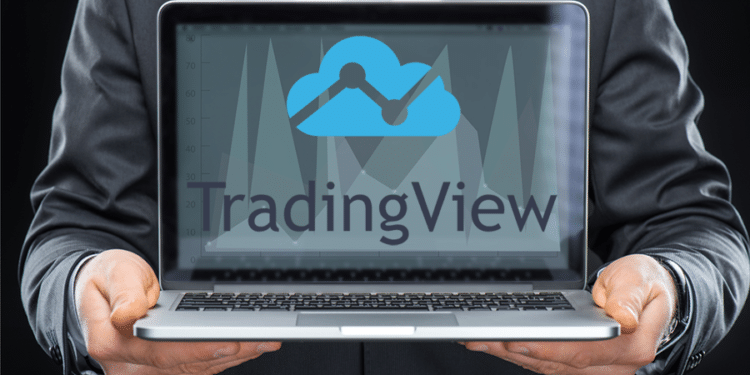They say if it isn’t broken, then don’t fix it; most forex traders using MT4 probably feel the same. Even though MetaTrader 4 and its more advanced version MetaTrader 5 familiar to every new and experienced forex trader because of its simplicity and compatibility with many brokers, it’s technically an old piece of software.
It hasn’t been updated for the most part since being launched in 2005. Although MetaTrader 5, released in 2010, is like an upgrade to MT4, it’s still far behind with the technological advancements that have come since.
Of all the trading platforms to emerge from the 2010s, one arguably shines above the rest — TradingView. In short, TradingView makes trading any market more beautiful and slicker. The platform might seem a little complex initially for beginners, but it makes more sense when you dive deeper into it.
Many forex traders still carry out all or most of their analysis and execution on MT4. Although the latter aspect is probably better on MT4 because of the enormous number of supported brokers, more traders should start using TradingView for numerous reasons that this article will explore further.
Reason #1. More responsive user interface and superior charting
If there is one main reason to convince any forex trader to consider using TradingView, it would have to be the software’s slick user interface and exquisite charting capabilities. Aesthetically speaking, it’s clear to see how more appealing TradingView appears compared to its counterpart.
TradingView’s responsiveness with clicking icons, opening charts, adjusting chart sizes, and just the overall user experience is faster than MT4. This may be because TradingView is completely browser-based without installing software on a computer, making a platform slower and clunkier.
TradingView’s trend lines, pitchforks, Fibonacci, annotation tools, geometric shapes, patterns, measurement tools, icons, and zooming are worlds better. Even the little shortcuts of undoing, adding vertical and horizontal lines, etc., make the experience smoother.
Users obtain a lot more personalization with TradingView. Moreover, traders have more chart types (12 compared to MT4’s 3), customizable time-frames, and special indicators not found on many other platforms.
The common ‘flying trendline’ problem on MT4 is non-existent on TradingView; all its tools work perfectly with the right experience.
Reason #2. Back-up of templates and charting drawings
By being a cloud-based software application, TradingView automatically back-ups any data changes made to charts and templates. This is also a substantial advantage over MT4. In the former, users have to ensure their templates are manually backed up elsewhere if they reinstall the platform again in the future.
Unfortunately, drawings on the charts which aren’t saved as templates can disappear forever. TradingView solves both of these problems. Any changes made on the charts, especially those of drawings, remain on a particular instrument even when one views other markets or closes their browser.
Reason #3. Simplicity of following multiple markets
With MT4, traders are only limited to the markets offered by their broker. In the case of TradingView, unless someone has a specific broker account connected, investors can view, analyze and watchlist the charts of the vast majority of financial instruments.
Reason #4. No software installation needed
This reason slightly links to the point of having markets restricted to a broker’s offering. Without TradingView, traders often have to install more than one MT4 platform to follow different instruments. However, TradingView is entirely browser-based, which is perhaps one of the main consequences of the application operating more smoothly.
Unless someone connects a demo or live account, again, they are not limited to just their broker’s instruments.
Reason #5. Lots of little perks not available on MT4
One outstanding quality of TradingVIew is the replay function, a tool for users to relive any moment on a chart. Essentially, this feature allows traders to rewind to any particular point on an instrument, a helpful tool for studying past data or just reliving certain occurrences (this feature is only available on the paid plans).
Also, TradingView has custom and unique indicators not obtainable on other platforms. Overall, as traders use TradingView more, they’ll begin to notice other little perks complementing their overall experience of performing analysis.
Reason #6. Better customer support and social media platform
At its core, TradingView is a charting platform and social media network for investors to share their ideas and analysis in a number of niche communities. The support alone from these groups is beneficial for anyone with questions. Although MT4 does have the MQL4 forum, it is not as pleasantly designed as a pleasant social website like TradingView.
One of the criticized elements of MT4 is its lack of support, which is understandable considering the software is free to use. By having dedicated customer support, TradingView can answer any queries, ensure their platform is constantly updated, and fix any bugs along the way.
Final word
The point of this article isn’t a suggestion of traders completely switching from MT4 to TradingView. It’s common nowadays for investors to use TradingView for their analysis and other special features while executing their positions on MT4.
Some things like connecting one’s account to an analytics platform (Myfxbook, FX Blue, etc.) are only possible on MT4. Therefore, it will always have a place in a trader’s ‘artillery.’
Though for a more enhanced and serious trading experience, TradingView is one of the prime options. The slight drawbacks are the limitations with the free plan, which come with ads. TradingView’s cheapest plan is the Pro, presently costing $14.95 a month.
This is sufficient for most traders as the other two plans are more expensive. Fortunately, the brand often has discounted yearly subscriptions that can potentially save clients up to 50%. For any investor who can at least afford the Pro plan, it will certainly enhance their trading journey.




